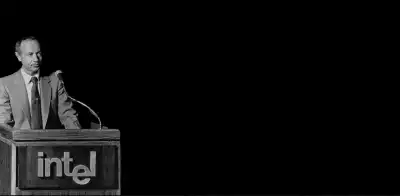Summary
Uncover how global healthcare nonprofit Possible, using OKR practice, fosters clarity, alignment and collaboration, driving a mission-driven culture with transparency and a focus on impact.
This piece is Part Two of a two-part series featuring Possible.
Part One: Making BHAGs Possible With OKRs.
The world is growing smaller. Once seemingly far-flung places are suddenly hubs of ingenuity and opportunity. As companies look to tap into these people that make up and reside in these different cultures and time zones, some may stop before they’re started because they think it’s impossible. That’s what makes people like Gaurav Tiwari so inspirational. He sees the possibility. It’s even in his organization’s name: Possible, the intrepid nonprofit partnership with Nepal’s Nyaya Health that has expanded its Objectives and Key Results (OKR) practice to its operations, clinical, shared service, and community teams.
“I’m reminded of the really diverse team,” says Gaurav, Possible’s operations director for Nepal. “From staff who have eighth-grade formal education to people with PhDs.”
Despite thoughtful planning and a suite of customized project management tools like Asana to help manage the OKR process, Gaurav and the team still needed many adjustments to bring all the different roles on board. “80 percent of our team are frontline folks,” he points out, “and day-to-day management is very different than shift work.”
Aspirational OKRs were a particular challenge, particularly when it came to clinical care. “We’d been thinking of OKRs as stretch goals — but for many of our team members,” Mark admits, “a goal where 70 percent completion was okay made no sense.”
Gaurav, Mark, and others, then, formed a new hypothesis: OKRs needed to be paired with considerable coaching and evangelizing. “We had to sit down and show how this system added value — we had to make it real,” says Gaurav. To do that, “we emphasized how much we valued staff growth as part of this process — how we wanted each person to see the bigger (organizational) picture and be part of this collective culture.”

Possible began to make OKRs part of every regular meeting, whether 1:1 or team-based. “In cycle one, we just kept OKR discussions in our side meetings — not in team-wide discussions.” In that iteration, the attention necessary to cultivate, track and adjust OKRs fell by the wayside.
To pivot, then, required a more intentional approach: “We began by copying our OKRs from our team-wide spaces into the top of each 1:1 agenda — so they became the focus of each 1:1,” as opposed to the afterthought.
“Now you can’t ignore them,” says Mark. “They don’t just reappear at the end of the quarter when you’re doing scoring. They become the contextual guidance for 1:1 meetings. You discuss other things, anything you want to — and you can do a bunch of firefighting, but there is always time reserved to ask, ‘Are we making progress on this OKR?’”
The pillars of Possible’s OKR practice
As Possible’s OKR efforts spread across the organization, each cycle brought further refinement. The end goal, in Gaurav’s eyes, was simple: “a culture of transparency and collaboration over time, (backed up) by intentional work.” With every iteration, three key concepts guided them: Clarity, Collaboration and — uniquely — Alignment.
Alignment (and, really, accountability)
In addition to a small number of well-honed, inspiring Objective statements and specific, ambitious Key Results, at Possible, each OKR is paired with an Alignment statement, tying the Objective to the organization’s broader strategic goals.
- Example: The overall goal for the organization this year is to prove to ourselves and our supporters that our Public Private Partnership model works at a large scale. To do that, we must seriously deepen the commitment of our key partner, the Nepali Government.
Possible’s unique inclusion of the alignment statement sought to tie OKRs to the company’s strong mission orientation–a process weighted equally with the drafting of quality Objectives and Key Results.

Alignment statements also enable structured reflection. At Possible’s regular leadership retreats, called a “Summit for Clarity,” leaders participate in accountability groups, where they reflect out loud on the realities of OKR progress (and failure), in front of everyone.
The group then participates in the accountability check, achieving collaborative validation and questioning of those Objectives by framing them against the broader alignment statements — enabling senior leaders to gauge “how grounded those audacious goals are in reality, relative to all the other goals and the local context,” notes Mark, adding “these have been great tools for us.”
Clarity
Possible’s OKR cycle starts with a bi-annual “Summit for Clarity,” where team members across the globe meet in person. Breakout groups work from Board-level OKRs to team goals to individual OKRs. The discussions highlight team strengths and weaknesses, what to target next, and to celebrate WINS.
One particularly valuable team exercise from the Summits are Mock OKRs. “The finance team makes a nursing OKR and vice versa,” says Gaurav, “which enables the cross-examination that sheds light on how much each team member understands about each other.”
Gaurav gives an example of the candor, mutual awareness, and respect the approach can inspire: “Look, we would love to see you make this really ambitious thing happen. But are you also taking into consideration all the times we give local government officials hospital tours?”
Collaboration
The mock OKR exercise translates to real practice too, he continues, “Isha, who leads our community health team — by definition a job with challenging logistics — had some radical ideas that we (ultimately) ended up creating as organization-wide policy. Isha’s push on how to get proactive and deliberate was incredibly valuable, and she used OKRs to put that advocacy into focus.”
Possible has also used OKRs to reimagine what transparent, bidirectional partnership that values equity as much as effectiveness. “When you’re working with a lot of philanthropic partners,” says Mark, “one thing you do not want to be doing is overpromising and under delivering.” Porting OKRs directly into quarterly impact reports has helped partners understand Possible’s strategy and progress. On the ground in Nepal, OKRs have been integrated into regular discussions with key community partners to strengthen alignment and, over time, impact.

One of the biggest pivots, in fact, has been moving away from a U.S.-team managing a team in Nepal, restructuring from a “one company, one org-chart” approach to two partnered organizations: the U.S.-based coordinating body, Possible, and the Nepal-based NGO, Nyaya Health. The new structure empowers those closest to the ground to define outcomes and progress in local terms.
And perhaps that is the most important success OKRs has helped Possible achieve — to grow well beyond an efficient operation and a robust set of tools and into a thriving culture. Co-founder and current CEO Duncan Maru points to this as the true measure of achieving Possible’s mission. The team still uses a number of these tools, but their “innovation over time, and what I think is truly unique is a better and more equitable approach to defining impact, measuring it, and implementing a learning organization that is constantly evolving.”
This piece is Part Two of a two-part series featuring Possible.
Part One: Making BHAGs Possible With OKRs.
If you’re interested in starting our OKRs 101 course, click here.




